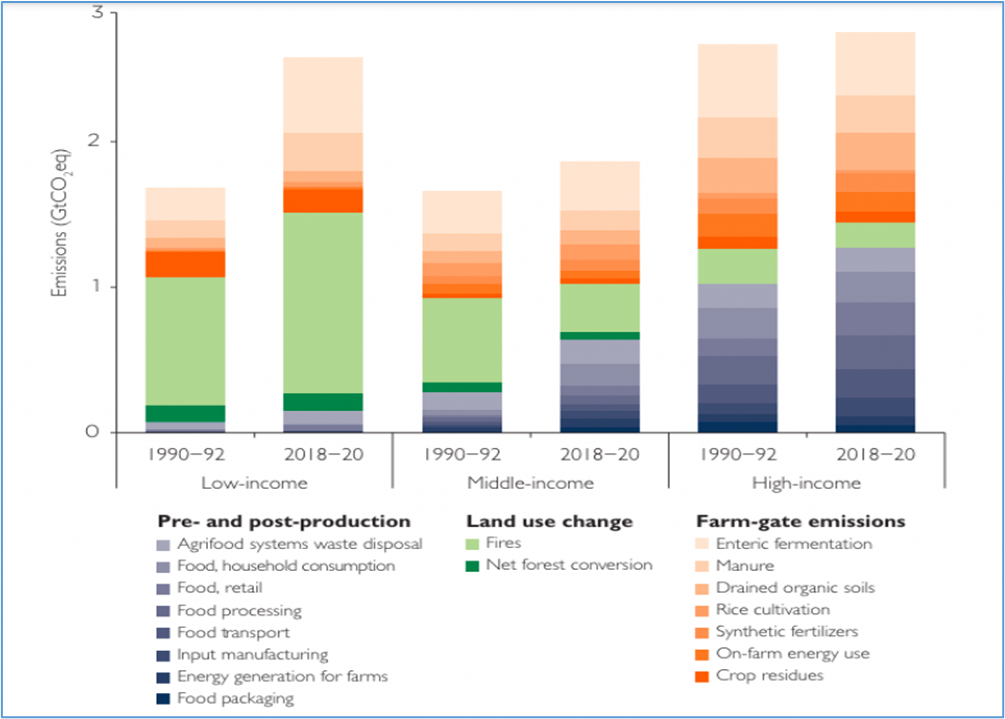PREVIOUS
World Bank Report on Agri-food System
May 11 , 2024
196 days
455
0
- World Bank released the report, “Recipe for a Livable Planet: Achieving Net Zero Emissions in the Agrifood System”.
- The world’s agrifood system emits about 16 gigatonnes of greenhouse gases (GHG) per year — about a third of all global emissions.
- Livestock is a major driver, with high-income countries among the largest consumers.
- Wealthy nations should reduce financial support for livestock farming to help tackle pollution caused by consuming red meat and dairy.
- One-third of all agricultural subsidies went toward meat and milk products in 2016
- Annual investments will need to climb 18-fold to $260 billion to halve agri-food emissions by 2030 and help the world hit a 2050 net-zero target.
- Replacing a quarter of India’s 8.8 million diesel irrigation pumps with solar pumps would cut agrifood emissions by 11.5 million tonnes per year.
- The top ten agrifood system emitters are China, Brazil, India, United States, Indonesia, the Democratic Republic of Congo, Russian Federation, Canada, Pakistan and Argentina.

Leave a Reply
Your Comment is awaiting moderation.


